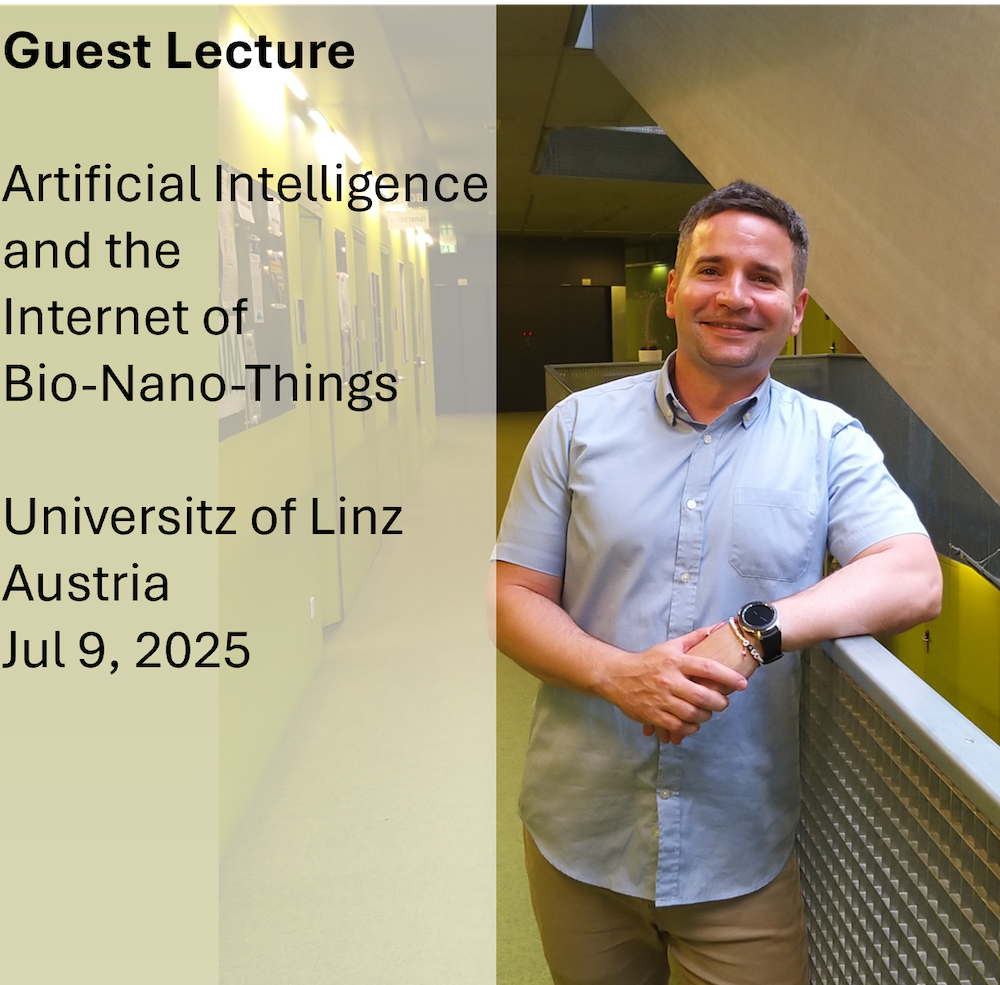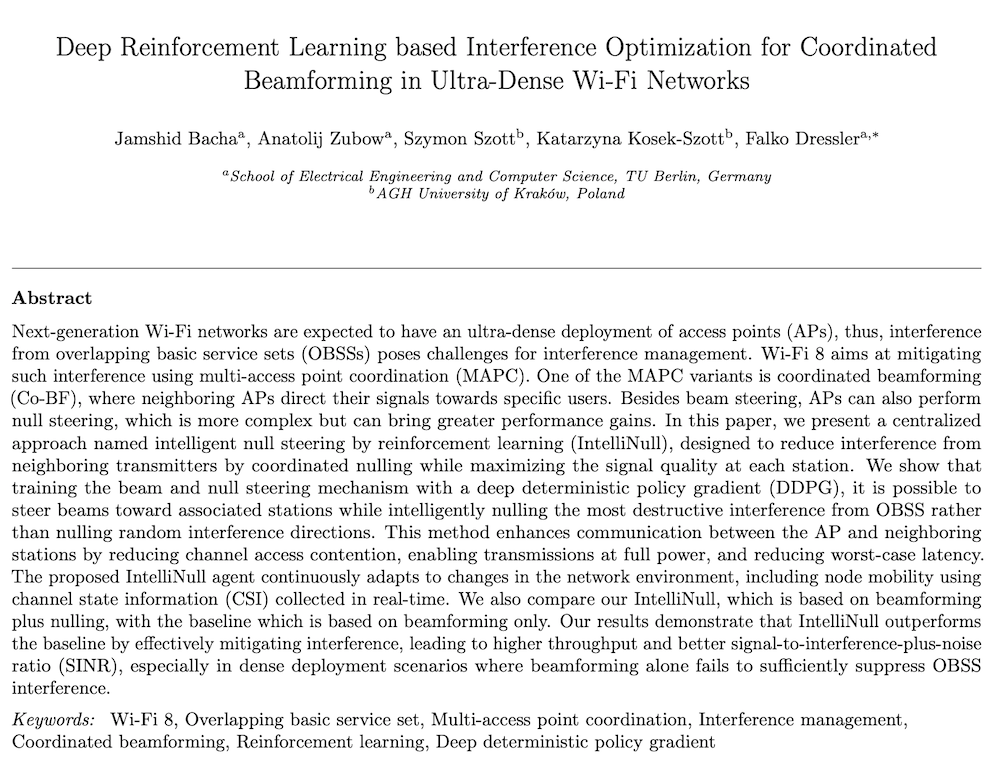Literature Database Entry
viriyasitavat2012framework
Wantanee Viriyasitavat, "A Framework for Reliable and Efficient Communications in Vehicular Networks," PhD Thesis, Electrical and Computer Engineering Department, Carnegie Mellon University (CMU), July 2012. (Advisor: Ozan K. Tonguz; Referees: Falko Dressler and Fan Bai)
Abstract
Vehicular ad hoc networks (VANETs) have emerged as a serious and promising candidate for providing ubiquitous communications, connecting vehicles to other vehicles traveling on the roads or vehicles to the Internet and other wide-area networks. This emerging communications platform can facilitate a number of vehicular applications - not only applications that are generic and already exist in other networks (e.g., Internet access, content distribution); but also applications that are new and specific to VANET. Due to the difficulties in seeking cooperation with the telecommunication infrastructure (i.e., those applications that require Vehicle-to-Infrastructure (V2I) communications), this PhD thesis will focus on applications that only require vehicle-to-vehicle (V2V) communications. Nonetheless, the work presented in this thesis can be used as a foundation and may be extended to the other type of VANET applications. According to the Dedicated Short Range Communications (DSRC) standards, vehicular applications are categorized into two main types: safety and non-safety applications. Since these two types of applications serve different purposes and have distinct routing and end-to-end requirements, it is practically impossible to design a single communications framework (i.e., transport and network layer) which could support all applications. Two distinct communications frameworks are thus proposed in this thesis to facilitate the two application types. The first part of the thesis focuses on the development of a new mobility model for traffic in urban areas and the comprehensive analysis of traffic pattern and connectivity characteristics of urban traffic. In addition to simulations study, an analytical framework that can predict key network connectivity characteristics is also derived. Unlike simulation studies, this framework leads to closed form results that provide valuable physical insight into the impact of key system parameters (such as road topology, traffic signal mechanism, speed limit, etc.) on network connectivity. These studies pave ways to the development of the communications frameworks for both types of vehicular applications (e.g., safety and non-safety applications). A communications framework for safety-related vehicular applications is proposed and presented in the second part of the thesis. Since most of safety applications (such as Post Crash Notification (PCN) application) only rely on a single multicast transmission and hence, do not need an end-to-end control (i.e., transport layer), the main effort is put into designing the message dissemination protocol. In this thesis, we propose a broadcast routing protocol for urban VANETs, namely Urban Vehicular BroadCAST (UV-CAST) protocol. The proposed protocol is completely distributed and is able to support both disconnected and well-connected network regimes in urban scenarios with zero infrastructure support. The last part of the thesis focuses on designing a communications framework for non-safety applications. Designing a Transport layer protocol in VANETs is a very challenging task as the end-to-end data transmission involves multi-hop wireless transmission; and the mobility and wireless channel conditions (such as fading, shadowing, multipath, etc.) exacerbate the well-known problems of using TCP over wireless links. In this part of the thesis, the two-way cross-layer control protocol (TCCP) is proposed. In addition to a fine-grained packet loss detection mechanism, the proposed solution addresses the end-to-end transmission problem at the network layer. However, unlike the conventional bottom-up approach, the network layer proposed in the TCCP scheme utilizes the transport layer information in making routing decisions through the top-down cross-layer design paradigm. The proposed TCCP scheme seems very promising for delay-tolerant applications and can support end-to-end communications in these applications for up to 5 hops. In addition to the aforementioned techniques, fairness control mechanisms are also proposed for scenarios in which multiple data flows take place simultaneously. Due to the inherent fairness artifacts of CSMA/CA medium access mechanism, the proposed fairness control mechanism is designed to circumvent or minimize such artifacts; and based on the similar cross-layer concept, such the fairness problem is addressed at the network layer. In particular, a new routing algorithm based on a cooperative routing concept is proposed whereby vehicles cooperate in making a routing decision. In particular, each vehicle independently and locally selects the next packet forwarder in such a way that the total number of relay vehicles used to route all the packets is minimized. In addition to minimizing the MAC-layer artifacts, simulation study has shown that the proposed concept also enables fairness control to be managed locally at relay vehicles. By having vehicles (instead of wireless channel) to partly handle bandwidth allocation among different data flows, the fairness issue can be addressed in a more efficient and flexible fashion. The resulting Multi-flow TCCP (MTCCP) protocol is extensively evaluated both in highway and urban scenarios and simulations have shown that in addition to fair allocation of resources, the proposed MTCCP protocol significantly improves the system performance in terms of goodput, end-to-end delay, and jitters.
Quick access
Contact
Wantanee Viriyasitavat
BibTeX reference
@phdthesis{viriyasitavat2012framework,
author = {Viriyasitavat, Wantanee},
title = {{A Framework for Reliable and Efficient Communications in Vehicular Networks}},
advisor = {Tonguz, Ozan K.},
institution = {Electrical and Computer Engineering Department},
location = {Pittsburgh, PA},
month = {7},
referee = {Dressler, Falko and Bai, Fan},
school = {Carnegie Mellon University (CMU)},
type = {PhD Thesis},
year = {2012},
}
Copyright notice
Links to final or draft versions of papers are presented here to ensure timely dissemination of scholarly and technical work. Copyright and all rights therein are retained by authors or by other copyright holders. All persons copying this information are expected to adhere to the terms and constraints invoked by each author's copyright. In most cases, these works may not be reposted or distributed for commercial purposes without the explicit permission of the copyright holder.
The following applies to all papers listed above that have IEEE copyrights: Personal use of this material is permitted. However, permission to reprint/republish this material for advertising or promotional purposes or for creating new collective works for resale or redistribution to servers or lists, or to reuse any copyrighted component of this work in other works must be obtained from the IEEE.
The following applies to all papers listed above that are in submission to IEEE conference/workshop proceedings or journals: This work has been submitted to the IEEE for possible publication. Copyright may be transferred without notice, after which this version may no longer be accessible.
The following applies to all papers listed above that have ACM copyrights: ACM COPYRIGHT NOTICE. Permission to make digital or hard copies of part or all of this work for personal or classroom use is granted without fee provided that copies are not made or distributed for profit or commercial advantage and that copies bear this notice and the full citation on the first page. Copyrights for components of this work owned by others than ACM must be honored. Abstracting with credit is permitted. To copy otherwise, to republish, to post on servers, or to redistribute to lists, requires prior specific permission and/or a fee. Request permissions from Publications Dept., ACM, Inc., fax +1 (212) 869-0481, or permissions@acm.org.
The following applies to all SpringerLink papers listed above that have Springer Science+Business Media copyrights: The original publication is available at www.springerlink.com.
This page was automatically generated using BibDB and bib2web.





